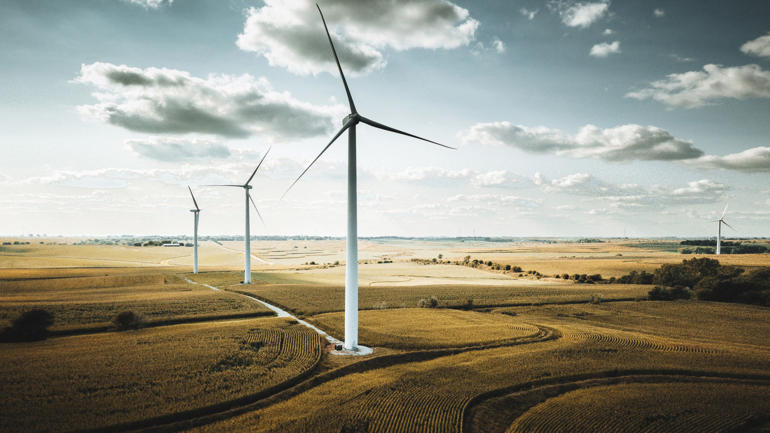This year is the 75th anniversary of the United Nations — an institution created in the wake of World War II, when the world was looking to emerge from a tragic era filled with conflict and political and economic turmoil. The U.N. was founded on the belief that ensuring security and solving global challenges requires countries to work together.
Five years ago, that belief was affirmed in the approval of the Sustainable Development Goals and the Paris Agreement on Climate Change. 2015 reflected the promise of multilateralism and the sense that, with collective action, a common quest to eliminate extreme poverty, tackle the climate crisis and drive sustainable development was attainable.
The world is in a different place today. Countries and communities are overwhelmed by the COVID-19 health pandemic and the ensuing economic crisis. Extreme climate impacts are increasing in frequency and severity. Deeply rooted economic, social and racial inequity is accelerating. How to address these crises simultaneously is the fundamental challenge confronting us all.
In times of crisis, it’s natural to focus on immediate needs, with health, food security and jobs front-and-center. But as countries inject an unprecedented $11.8 trillion in stimulus spending into their economies, it is essential that short-term solutions don’t exacerbate long-term problems. We need to prioritize solutions that respond to multiple challenges at the same time.
Unfortunately, this message has not yet been widely embraced. Many governments are choosing to double-down on unsustainable, high-carbon investments. Right now, in 18 countries analyzed by Vivid Economics, 14 of them have stimulus packages that are expected to do more environmental harm than good.
An extreme example of this is the U.S. federal government, which committed $3 trillion in fiscal stimulus with no consideration for sustainability. Furthermore, the U.S. Environmental Protection Agency is ominously exercising “enforcement discretion” indefinitely through the pandemic.
Some governments are taking a more mixed approach. For instance, while China earmarked $205 billion for rail and metro systems, grid upgrades and 5G networks, it also permitted more coal-fired capacity for construction in the first half of 2020 than in all 2018 and 2019 combined. Given the rapidly declining costs of renewables and storage, investing in new coal plants is a lose-lose option.
But other governments are moving in the right direction. 30% of the European Union’s €750 billion ($858 billion) recovery package supports climate-friendly measures, including €17.5 billion ($20.6 billion) for a Just Transition Fund. Nigeria removed some of its fossil fuel subsidies, expectedly saving approximately $2 billion each year. Others like the Republic of Korea, France and Italy increased subsidies for rooftop solar PV.
These leading countries are on solid ground. Research by the New Climate Economy — for which WRI serves as the secretariat — finds that low-carbon, climate-resilient development is not only compatible with, but essential to strong economic and job growth, human health and social equity.
For example, Indonesia’s Low Carbon Development Initiative offers the country a pathway to a strong and job-rich recovery from COVID-19 in the short-term and better growth (compared to business-as-usual) in the long-term. A green economic recovery in Brazil will also allow its economy and jobs to grow more over the next decade than the current development model, starting in the first year. In the United States, low carbon investments in clean energy, public transit, restoration and sustainable forest management are in lockstep with strong job creation.
Complementing national government action are examples from other important actors, notably cities, businesses and investors, and — underpinning them all — the general public. Indeed, many of them are moving faster and further than their respective national governments, suggesting that the winds of change may not be so far away.
Cities
Cities are undeniably on the frontlines of the COVID-19 pandemic. With their concentrations of people and economic activity, cities must also be at the forefront of the recovery. In particular, how people in cities move around will have significant consequences for cities, countries and, indeed, the world.
Public transport presents a unique conundrum. Typically the answer to many of our social and environmental challenges, public transport ridership and revenues have fallen drastically, putting this basic service at risk. In addition, there is justified concern that private vehicle use will surge. But public transit use is expected to come back, albeit slowly, as restrictions lift. In addition to the fact that public transit construction and maintenance can be a big job creator, public transit remains a highly worthwhile investment.
There are other low-carbon examples in cities to build on. Kampala, Uganda has seen an increase in non-motorized transportation and biking, contributing to a 40% drop in daily pollution levels. As part of its recovery plan, Medellín, Colombia plans to expand bike lanes by almost 50% within three years and more than double the number of interconnected public transport lines by 2030.
Business & Investors
Momentum to reduce emissions and develop low-carbon strategies among businesses continues to grow. Nearly 1000 large companies are taking action to reduce greenhouse gas emissions in line with the science, and more than 280 companies committed to the SBTi’s Business Ambition for 1.5°C campaign to achieve a net-zero world no later than 2050. Why are they doing this, even after the pandemic struck? Leading companies recognize that reducing emissions improves efficiency, innovation and profitability.
In Europe, Apple, IKEA and Deutsche Bank were among the more than 150 businesses and investors urging the European Union to raise its GHG emission reduction target for 2030 to 55% compared to 1990 levels. The U.S. business roundtable — comprised of 200 CEOs representing 15 million employees and more than $7 trillion in revenues — recently advocated for a “comprehensive” approach for the United States on climate change. This was reinforced by a landmark report from a subcommittee of the U.S. Commodity Futures Trading Commission, a bipartisan group, which calls for better management of climate risk.
The Task Force on Climate-related Financial Disclosures (TCFD) has also been gaining traction with investors and companies increasingly concerned about financial risks associated with climate change. Even before the pandemic, more than 930 companies and organizations, with a combined market capitalization of over $11 trillion, supported the recommendations of the TCFD.
Meanwhile BP, which is known for big climate talk in the past, is predicting the demise of its own industry. BP published three scenarios for global oil demand — two of which suggest demand may have already peaked. It is no surprise, therefore, that the company plans to reduce production by 40% and increase renewable energy spending 10-fold by 2030. This example aligns with growing evidence showing that environmental, social and governance (ESG) index funds are outperforming traditional index funds even through the COVID-19 market turbulence.
People
Underpinning all of the above is an undeniable swell of urgency and inspiration from people around the world. If 2019 was the year of climate activism, with Greta Thunberg and many other young voices leading the charge, can the end of 2020 be a springboard for greater action? As we see blazing wildfires in the western United States and deadly storms, floods and droughts around the world, are people finally waking up to the fact that climate change is here now and affects everyone? In a global survey of 28,000 people in 14 countries, around two-thirds of respondents say that governments’ COVID-19 economic recovery efforts should prioritize climate change.
Most of all, the pandemic itself reminds us of how vulnerable we are and that it is far better to prepare than to wait for the next crisis to strike. The world will eventually recover from the pandemic, but it may not survive climate change unless we act.
In the coming months, as countries emerge from the grips of the COVID-19 crisis, we will need more leaders to step forward and show that there can be a better way. Countries must take cooperative and forward-looking action to help communities build back better and ensure that the world is better prepared for future shocks.
For those participating in the virtual events of U.N. General Assembly and Climate Week, this is a moment to reinvigorate the notion that global challenges require global solutions, that people have more in common than not, and that our collective future is brighter when we take action together.
This article was originally published by WRI








